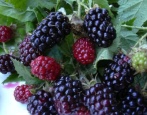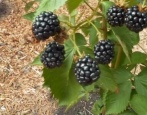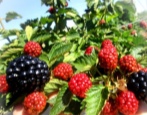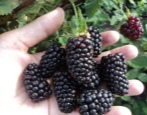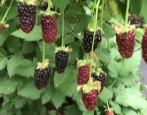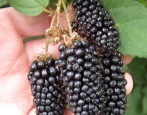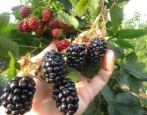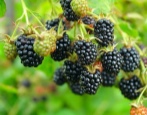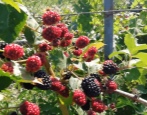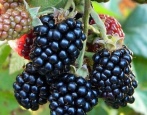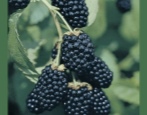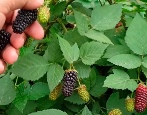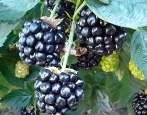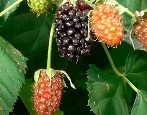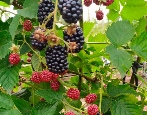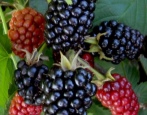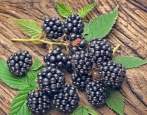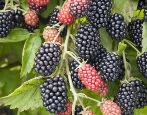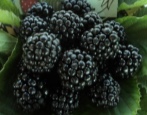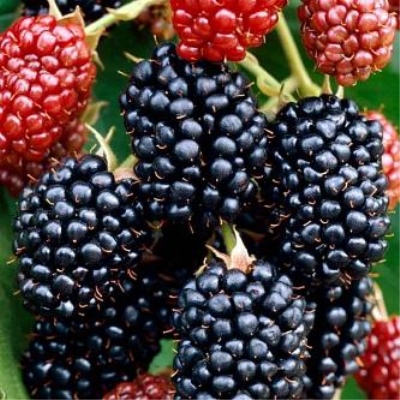
- Authors: American selection
- Taste: sweet and sour
- Scent : there is
- The presence of thorns: No
- Berry weight, g: 3,5-4
- Berry size: large
- Berry color: black
- Fruiting period: in July-early August
- Yield: on the 2nd and 3rd year after planting 0.1-0.3 kg, on the 4th - 0.5-0.6 kg, on the 5th - already 2.5-3 kg per bush
- Frost resistance, ° C / Winter hardiness: winter hardy, up to - 34C
Blackberries are a fragrant, tasty and very healthy berry, however, the numerous thorns and capriciousness of the plant did not allow many gardeners to grow it in their area. Everything changed when less whimsical and thornless species began to appear, including the blackberry Darrow variety.
Breeding history of the variety
Blackberry Darrow is a fairly promising variety grown on an industrial scale. This species was bred by American breeders in Maryland more than 60 years ago. The fragrant and fleshy berry is the result of crossing two varieties - Eldorado and Henrik. Darrow's blackberry is most grown on farmland in Mexico, but all exports are directed to Europe and the United States.
Description of the variety
This variety is rightfully considered universal, since berries are eaten both fresh and processed. They are dried, frozen, jam, preserves, marmalade, compotes and jelly are made. Even blackberry leaves do not disappear - they are used to brew aromatic tea, which with its taste and aromatic qualities resembles Chinese.
Ripening terms
The ripening and fruiting period is very extended - 1-1.5 months (from July to August). Depending on the climatic characteristics, this period may shift slightly. The advantage of the variety is that even when fully ripe, the berries do not crumble.
Growing regions
Blackberry Darrow is resistant and adapted to different climatic conditions, therefore it takes root in both northern and southern regions. The bushes are not afraid of drought, since this can be corrected with the help of abundant watering, and are also resistant to severe frosts - even a drop in temperature indicators to -30 degrees Celsius is not a fear for blackberries. That is why she does not need additional protection in the form of wraps for the cold period.
Yield
The yield of the variety is quite high. It all depends on the age of the bushes and the place where they are planted. For 2-3 years of planting, you can collect 300-400 g from the bush, for 4 years the yield increases and reaches 500-600 g, and after the fifth year the bush gives up to 3 kg of fragrant and useful berries. There are very fruitful periods when each bush yields up to 10 kg of berries.
Berries and their taste
Each berry has a dense and fleshy structure, which allows the fruit to be transported without prejudice to its presentation. The fruit has an elongated conical shape and is colored black with a glossy finish. The weight of each berry ranges from 3-4 grams. As for the palatability, they have a pronounced sweetness, complemented by a subtle sourness. Even unripe fruits have a pleasant sweetness. As for the aroma, it is incredibly bright, however, like most blackberry varieties.
Growing features
This variety is completely unpretentious, therefore it grows well in different places. Even an inexperienced gardener can cope with the cultivation and cultivation of Darrow's blackberries, the main thing is to follow the basic rules of care.
Site selection and soil preparation
Blackberries can be planted in the spring, before the buds open, and in the fall, after the end of the fruiting and growth period.The best place for growing Darrow's blackberries is considered to be where there is a lot of sun, there is no strong wind and not too damp, since it is the excess of dampness that can inhibit the growth and ripening of fruits. In addition, dampness lowers the frost resistance of the bushes. There are no special requirements for the composition of the soil, however, carbonate soils are considered unsuitable. The best place is considered to be where there is a fence, hedges and the possibility of tying bushes in the future. You need a lot of space, since the distance between the bushes should be 1-1.5 meters, and when planting in rows, the width should be observed - at least 1.5-2 meters.
Pruning
Pruning is an important part of a comprehensive blackberry bush care. In the fall, at the end of the harvest, it is necessary to cut off all the shoots that have borne fruit to the very base. In addition, you need to cut off diseased and dried branches. During the growing season, young shoots are cut off by 10-15 cm, and the side branches are slightly shortened when they reach a length of 50 cm.
Watering and feeding
Despite its resistance to drought, the plant needs watering. Watering daily is essential in the first few months after planting, and then during periods of severe drought. Irrigation is also recommended during the period of fruit ripening and active growth of shoots. For the active supply of oxygen to the soil, it is necessary to loosen the soil from time to time. Many farmers mulch using straw and fallen leaves.
An important aspect is the replenishment of the soil with useful substances. In spring and autumn, the soil is saturated with compost. In addition, fertilization with superphosphate and potassium is recommended in autumn, and peat laying in early spring.
Frost resistance and preparation for winter
Since Darrow's blackberry bushes are resistant even to severe frosts, it is not worthwhile to carry out warming, however, it is still recommended to perform a number of manipulations - pruning, digging the soil in autumn and laying useful fertilizers.
Diseases and pests
Blackberry bushes have very strong immunity, however, there are a number of diseases that the plant is exposed to if it is not properly cared for or planted in unfavorable conditions. Among the diseases that bushes are susceptible to, one can distinguish anthracnose, rust and didimella. To avoid the invasion of harmful insects, blackberry bushes are planted away from raspberries and strawberries, otherwise bears and raspberry aphids cannot be avoided.
Reproduction
This variety of blackberries with erect shoots propagates in two ways - with the help of root shoots and cuttings. In addition, you can use seeds, but the harvest will have to wait 3-4 years.
Review overview
Considering the numerous reviews of experienced farmers and gardeners, it can be argued that the American blackberry is unpretentious in care, gives a good harvest, does not crumble during the fruiting period. It is the density of the fruit, as well as carefree cultivation without large investments, that allow Darrow blackberries to be grown on an industrial scale. The only inconvenience, according to summer residents, is that the bushes have to be constantly tied up, constructing special structures.
